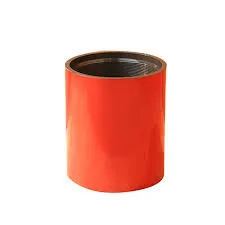- Afrikaans
- Albanian
- Amharic
- Arabic
- Armenian
- Azerbaijani
- Basque
- Belarusian
- Bengali
- Bosnian
- Bulgarian
- Catalan
- Cebuano
- Corsican
- Croatian
- Czech
- Danish
- Dutch
- English
- Esperanto
- Estonian
- Finnish
- French
- Frisian
- Galician
- Georgian
- German
- Greek
- Gujarati
- Haitian Creole
- hausa
- hawaiian
- Hebrew
- Hindi
- Miao
- Hungarian
- Icelandic
- igbo
- Indonesian
- irish
- Italian
- Japanese
- Javanese
- Kannada
- kazakh
- Khmer
- Rwandese
- Korean
- Kurdish
- Kyrgyz
- Lao
- Latin
- Latvian
- Lithuanian
- Luxembourgish
- Macedonian
- Malgashi
- Malay
- Malayalam
- Maltese
- Maori
- Marathi
- Mongolian
- Myanmar
- Nepali
- Norwegian
- Norwegian
- Occitan
- Pashto
- Persian
- Polish
- Portuguese
- Punjabi
- Romanian
- Russian
- Samoan
- Scottish Gaelic
- Serbian
- Sesotho
- Shona
- Sindhi
- Sinhala
- Slovak
- Slovenian
- Somali
- Spanish
- Sundanese
- Swahili
- Swedish
- Tagalog
- Tajik
- Tamil
- Tatar
- Telugu
- Thai
- Turkish
- Turkmen
- Ukrainian
- Urdu
- Uighur
- Uzbek
- Vietnamese
- Welsh
- Bantu
- Yiddish
- Yoruba
- Zulu
bull plug pipe layout
Understanding Bull Plug Pipe Layout in Industrial Applications
In the realm of industrial piping systems, the layout and configuration of pipes play a crucial role in the efficiency and safety of operations. One critical component often discussed in this context is the bull plug. A bull plug is essentially a pipe fitting that allows for the sealing of a pipe's end, thereby preventing any fluid or gas from escaping. This article will delve into the significance of bull plug pipe layouts within industrial settings.
What is a Bull Plug?
A bull plug, also known as a blind plug, is a sturdy fixture typically made from metals such as stainless steel, carbon steel, or alloys, designed to close off the end of a pipe securely. It serves various purposes, including pressure retention, control of fluid flow, and maintenance access. Bull plugs are especially prevalent in high-pressure systems where leaks can pose serious safety hazards.
Importance of Pipe Layouts
The layout of a piping system, which involves the arrangement and connections of various pipe segments and fittings, directly impacts functionality. In complex systems, such as those found in oil and gas, chemical processing, or power generation, a well-structured layout ensures optimal flow rates, minimizes pressure drops, and facilitates maintenance. When incorporating bull plugs into a pipe layout, engineers must consider several factors such as accessibility for future inspections, thermal expansion, and potential variations in pressure.
Design Considerations
Designing a bull plug pipe layout involves collaboration among engineers, fabricators, and project managers
. Critical design considerations includebull plug pipe layout

1. Material Selection The chosen material for bull plugs should be compatible with the fluids transported through the pipes, capable of withstanding the operating pressures, and resistant to corrosion.
2. Accessibility Strategically placing bull plugs for ease of access during maintenance or repairs is essential. This can save time and labor costs when conducting inspections or replacements.
3. Pressure Handling The system must be designed to accommodate the maximum expected pressure. Engineers often perform calculations to ensure that the bull plugs and other fittings can handle these pressures safely.
4. Thermal Expansion and Contraction Pipes are subjected to temperature changes, causing them to expand and contract. Bull plugs must be installed in a way that allows for some degree of movement to prevent failure.
Conclusion
In conclusion, the bull plug pipe layout is a fundamental aspect of industrial piping systems. It encapsulates not just the physical arrangement of components but also the engineering principles aimed at ensuring safety, efficiency, and reliability. By understanding the roles and considerations associated with bull plugs, engineers can design piping systems that meet the rigors of industrial operations while adhering to regulatory standards and best practices.
As industries continue to evolve and adopt more advanced technologies, the importance of a well-structured bull plug pipe layout will only grow. This ensures that systems are not only operational but also versatile enough to adapt to future needs and innovations. Understanding these elements can greatly contribute to the success of any industrial project, ensuring seamless production processes and safe operational environments.
-
Tubing Pup Joints: Essential Components for Oil and Gas OperationsNewsJul.10,2025
-
Pup Joints: Essential Components for Reliable Drilling OperationsNewsJul.10,2025
-
Pipe Couplings: Connecting Your World EfficientlyNewsJul.10,2025
-
Mastering Oilfield Operations with Quality Tubing and CasingNewsJul.10,2025
-
High-Quality Casing Couplings for Every NeedNewsJul.10,2025
-
Boost Your Drilling Efficiency with Premium Crossover Tools & Seating NipplesNewsJul.10,2025







